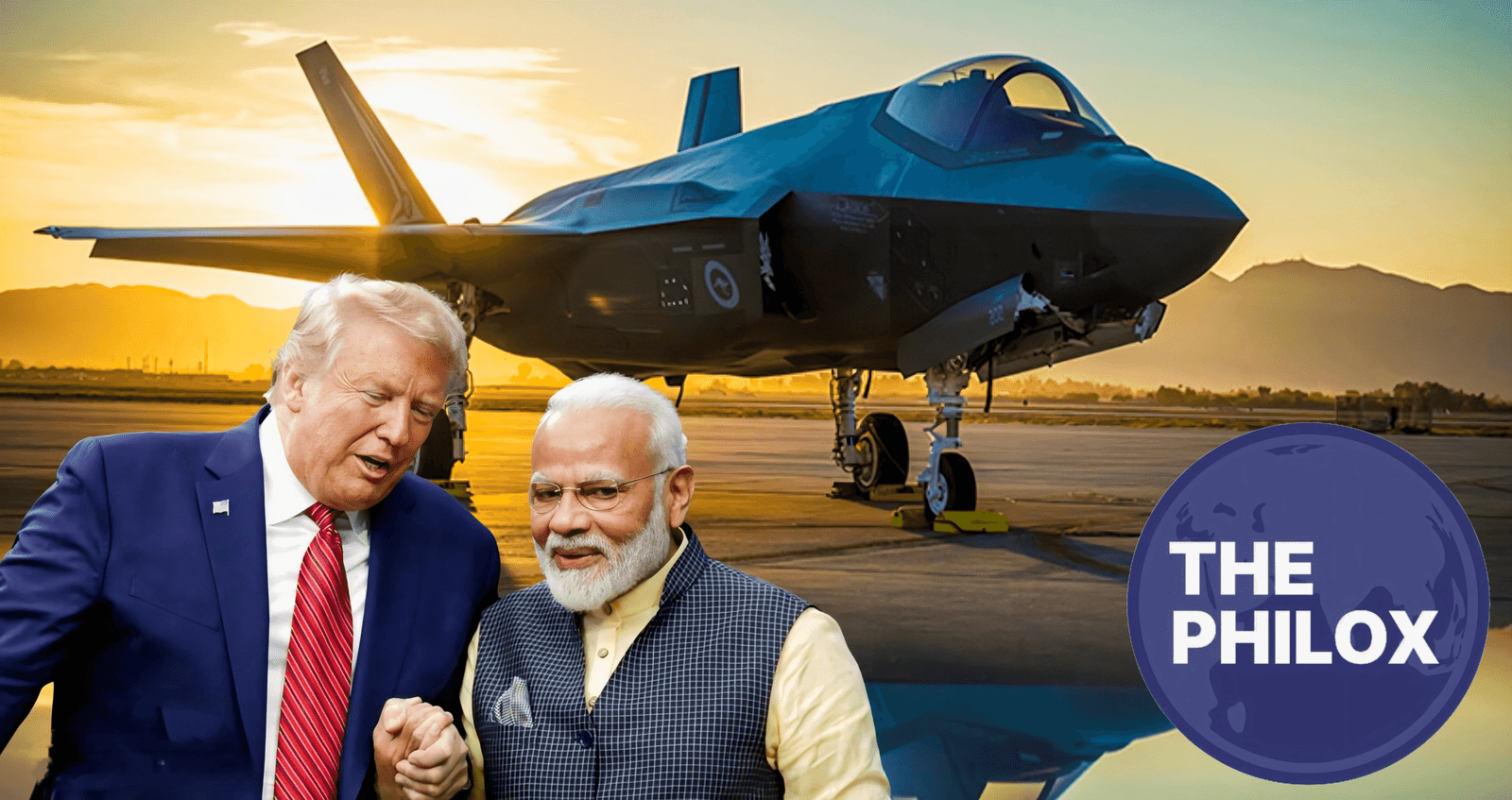Every country moves deliberately in the great theater of world geopolitics to protect its interests, deepen alliances, and claim leadership.
Among the several power plays, the defense sector is still a vital area of involvement since military capability usually determines a country’s international posture.
Former U.S. President Donald Trump made an offer to India—the procurement of the very sophisticated F-35 Lightning II combat jets—within this intricate framework.
Although appealing, this idea raises a lot of issues including geopolitical effects, strategic need, and financial sustainability.
As India’s defense modernizing initiatives gather steam, the issue remains: Does the Indian Air Force (IAF) really require the F-35, or will this purchase lead to long-term reliance that reduces India’s strategic autonomy?
The F-35 Lightning II: Technological wonder
The height of contemporary aircraft warfare technology is embodied in the Lockheed Martin F-35 Lightning II Built as a single-seat, single-engine stealth multirole fighter, the F-35 is intended for exceptional situational awareness, electronic warfare capability, and interoperability. The aircraft says:
1. Stealth Capabilities: Its radar-evading architecture lets it run invisible in dangerous surroundings.
2. The F-35 improves real-time decision-making and tactical awareness by including state-of- the cutting edge sensors.
3. It can easily handle air superiority, ground attack, reconnaissance, and electronic warfare operations.
4. Operating as a data hub, the F-35 shares intelligence with other assets on the battlefield, therefore reflecting network-centric warfare integration.
5. The F-35 presents major budgetary and operational difficulties even if it provides an unquestionable technological superiority.
The Cost Factor: An Exensive Financial Outlay
The F-35 is a long-term financial commitment as much as an aircraft. As of 2024, each F-35A—the most basic model—stands at roughly $82.5 million; the F-35B and F-35C versions cost noticeably more. Still, the initial acquisition expenses barely scratch the surface.
1. One of the most costly aircraft to run since the projected operational cost per flight hour is around $38,000.
2. The F-35 adds to the budgetary load by needing specialist repair facilities, logistical support, and qualified staff.
3. Lifecycle Costs: Projected to be over $2 trillion over its whole lifetime, the initiative is a significant financial effort.
For a growing country like India, such an expenditure calls for close examination since defense spending has to be weighed against other vital sectors such infrastructure, education, and healthcare.
The Defense Needs of India: Is the F-35 appropriate?
Regional security issues, especially those related to China and Pakistan, define India’s defense posture mostly. Now running 31 fighter squadrons, the IAF considerably below the approved strength of 42.
This shortage calls for fleet modernization, but the important question is whether the F-35 fits India’s immediate and long-term requirements.
India has effectively combined systems like the Rafale and the Su-30MKI, both of which have been useful in combating regional concerns. Particularly the Rafale has shown its supremacy in air-to–air and air-to- ground combat, therefore acting as a strong deterrent to enemies.
Furthermore, India’s current air defense plan calls for the S-400 missile defense system bought from Russia to help to reduce aerial danger.
Including the F-35 into this system would call for significant compatibility changes, therefore aggravating operational integration.
Furthermore tailored for high-end combat situations—especially in collaborative NATO operations—the F-35 is Given India’s particular security concerns, it might not get the same operational benefits as the United States or its partners.
Investigating Other Solutions
India has good options that fit its strategic and financial goals instead of funding an expensive foreign platform.
1. Indigenous Development: Road to Self-Reliance
Dedication to defense self-reliance has made notable advancement recently. Designed by Hindustan Aeronautics Limited (HAL), the Tejas Light Combat Aircraft (LCA) has progressed into a sophisticated fighter program featuring the forthcoming Tejas Mk-1A and Tejas Mk-2 variants.
India is also aggressively developing the fifth-generation fighter designed for its operational needs, the Advanced Medium Combat Aircraft (AMCA). With manufacturing expected by 2035, the AMCA might give India native stealth capabilities free from depending on outside sources.
2. enhancing Strategic Defense Cooperation
India has long-standing defense relations to Israel, France, and Russia, each of which presents substitutes for the F-35.
1. Russia has suggested cooperative manufacture of the Su-57 Felon, a fifth-generation stealth fighter. Unlike the F-35, the Su-57 could be developed under the “Make in India” campaign, therefore encouraging native industry.
2. Dassault Rafale & Future Acquisitions (France): India is exploring more Rafale fighter jets, already included into the IAF. France also suggests joint development of next-generation fighters.
India is investing in unmanned combat aerial vehicles (UCAVs) and AI-driven warfare systems, fields where Israel and the United States provide cutting-edge technologies instead of manned fighter jets.
India can keep strategic autonomy by spreading out its defense alliances, so modernizing its air force.
Geopolitical consequences: The cost of reliance
Although getting F-35s will improve India’s defense relations with the United States, it also has geopolitical implications.
1. India has traditionally depended on Russian military assets, especially the Su-30MKI and S-400 missile systems, which affects their relations with Russia. Choosing the F-35 could sour this ties and influence next defense projects.
2. U.S. Influence on Indian Defense Policy: Policy restrictions sometimes accompany American arms purchases. India’s strategic flexibility in world affairs may be limited by too great reliance on American technology.
3. Stronger Indo-U.S. defense collaboration could raise tensions with China, hence driving countermeasures including further military cooperation between China and Pakistan.
4. India has to balance the long-term consequences of strategic reliance against the advantages of acquiring F-35s considering these elements.
Is the F-35 Worth It? The Golden Cage
Unquestionably, the F-35 marks a technological revolution in aircraft warfare and provides unmatched capability.
But it also offers a paradox: a golden prison in which geopolitical entanglements, operational restrictions, and financial burden overwhelm initial benefits.
The road toward military modernization for India should give cost-effective, strategically sensible, native alternatives first priority.
Although modern foreign technology appeals greatly, a self-reliant military system guarantees long-term autonomy and sustained security.
India’s priorities should stay on enhancing its domestic defense sector, growing current fighter programs, and participating in mutually advantageous international cooperation instead of entering a financial and geopolitical web.
Though a marvel in itself, the F-35 might not be the best fit for India’s changing defense posture.
Stay Connected and Share Your Stories
For all those inspired by stories of resilience and ambition, follow us on X/Twitter and on Instagram . For those with untold stories that you would love to share, please send them to contact@thephilox.com




